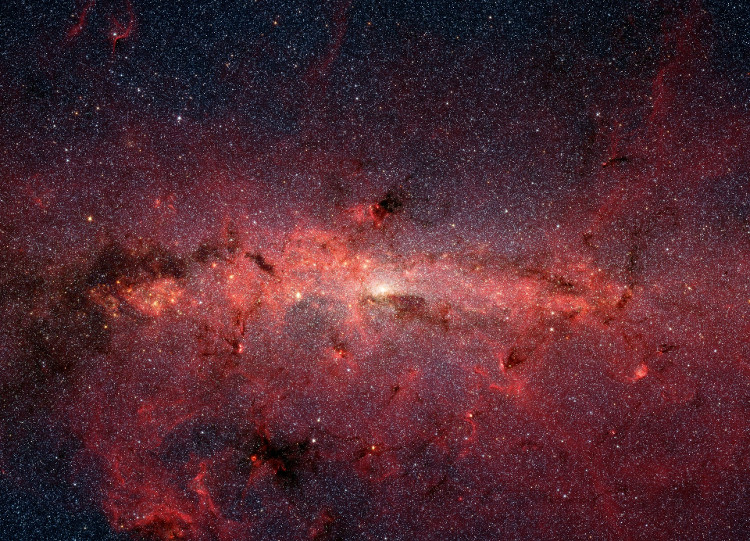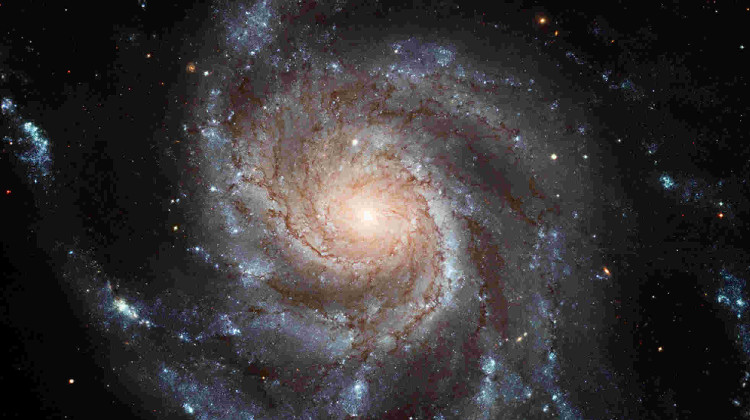What is the Milky Way? What are the different galaxies and galaxies?
In this article, we will explore how the Milky Way and Galaxy, Galaxy and Galaxy are different. Please consult with us.
What is the Milky Way?
The Milky Way is a galaxy (galaxy) that the Solar System is in. It appears in the sky like a translucent bright strip extending from the constellation of the Haunting (Cassiopeia) to the north to the South Cross (Crux) in the south. The brighter Milky Way toward the constellation Sagittarius (Sagittarius) is the center of the Milky Way. One fact is that the Milky Way divides the sky into roughly equal parts, indicating that the Solar System is very close to the plane of this galaxy.

Galaxy.
The Milky Way is a spiral galaxy with a bar-type SBbc type according to the Hubble classification (the disk-shaped galaxy has a tightly coupled branch and is somewhat close to the convex center) with a mass of approximately 1012 masses. of the Sun (M☉), there are about 200-400 billion stars (crystalline). The Milky Way has a diameter of about 100,000 light-years. The distance from the Sun to the center of the Milky Way is about 27,700 light-years.
The term "Milky Way" (Milky Way) is the unique name of a galaxy containing our Solar System. The Milky Way is a spiral galaxy about 100,000 to 120,000 light-years across, and contains between 100 and 400 billion stars.
Like many galaxies, the Milky Way also has a supermassive black hole located in the center named Sagittarius A *.
What is a galaxy?

Galaxy fast.
A galaxy is a large system of celestial bodies and matter bound together by gravity, including stars, stellar remnants, interstellar mediums containing gas, cosmic dust and dark matter, an important component of important but not well understood.
Classification of Galaxies

Andromeda Galaxy.
Galaxies have three main morphological types: elliptical, spiral, and anomalous . In addition, a more detailed description of the galaxy structure is based on their shape, as shown by Hubble in his classification.
- Elliptical Galaxy : Hubble's classification system evaluates elliptical galaxies based on their elliptical shape, going from E0, to galaxies in the shape of a sphere, up to E7, with an elongated shape. These galaxies resemble the ellipsoid mass, making them appear as ellipses when viewed under an angle. This form shows very few structural characteristics and often has relatively little interstellar matter in elliptical galaxies.
- Spiral galaxy : is the type of galaxy that stars distribute spirally toward the center. Although stars and most other visible matter in this galaxy lie on a plane, the main mass of spiral galaxies is concentrated in the spherical domain of extended dark matter that covers matter. visible.
- Anomalous galaxies are galaxies with unusual structures due to tidal interactions with other galaxies.
Dwarf galaxy
Although many galaxies stand out with spiral or elliptical structures, most galaxies in the Universe are small in size. These dwarf galaxies are relatively small when compared to some other galaxies, such as they are about one percent the diameter of the Milky Way and contain only a few billion stars.
- Comet - the mystery of the universe
- Distinguish meteor, meteorite and comet
- Things you don't know about meteors
- The first image of the early Milky Way Strip
- The Milky Way is lighter than we thought
- The Milky Way has no numerical date
- Detecting small galaxies similar to the early Milky Way
- Nearly 900 galaxies hidden behind the Milky Way
- Things you don't know about galaxies
- The true size of the Milky Way
- The 'monster' called the Fairy is about to swallow the galaxy containing the Earth
- Announced the most accurate volume of the whole Milky Way
- Close up of galactic conflict
- The Milky Way is lighter than previously thought
- The Milky Way is twisted, not flat
 Van Allen's belt and evidence that the Apollo 11 mission to the Moon was myth
Van Allen's belt and evidence that the Apollo 11 mission to the Moon was myth The levels of civilization in the universe (Kardashev scale)
The levels of civilization in the universe (Kardashev scale) Today Mars, the sun and the Earth are aligned
Today Mars, the sun and the Earth are aligned The Amazon owner announced a secret plan to build a space base for thousands of people
The Amazon owner announced a secret plan to build a space base for thousands of people